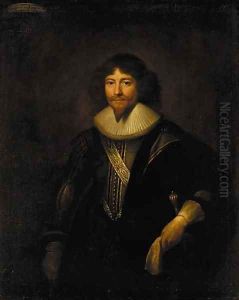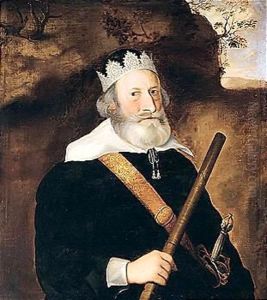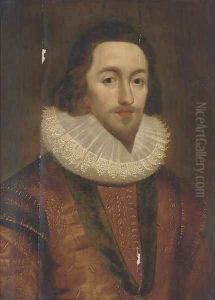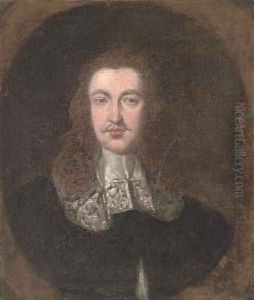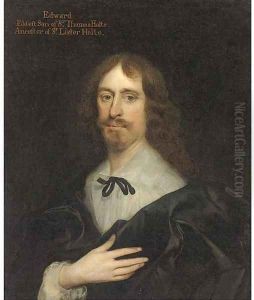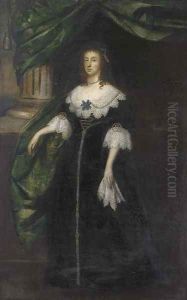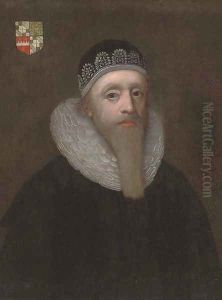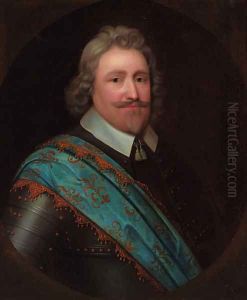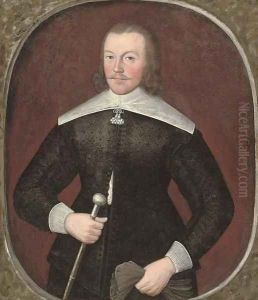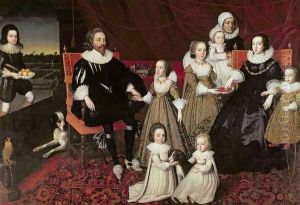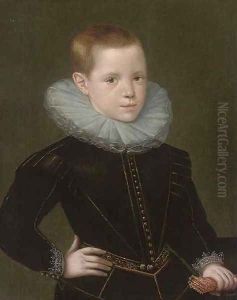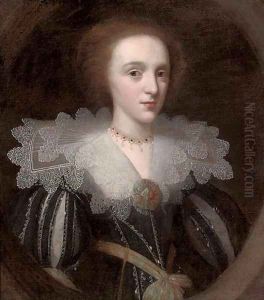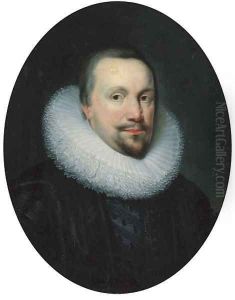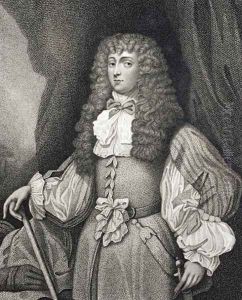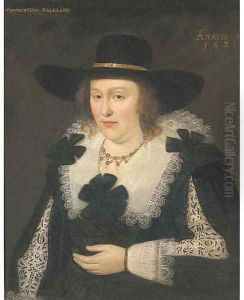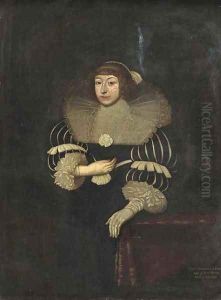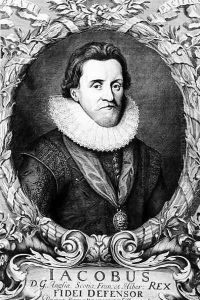Johnson, Cornelius I Paintings
Cornelius Johnson, also known as Cornelius Janssen van Ceulen, was a distinguished portrait painter who was active during the early 17th century. Born in London in 1593, he was of Flemish descent. His parents were Protestant refugees from Antwerp, which suggests a background embedded in the rich artistic traditions of the Low Countries. Johnson's early life and training are not well-documented, but it is believed that he was influenced by the artistic environment of London and possibly received training from Dutch or Flemish artists residing in the city at that time.
Johnson's career flourished in England, where he became known for his refined and detailed portrait work. He was particularly adept at capturing the intricate details of his subjects' clothing and jewellery, which made his work highly sought after among the English nobility and gentry. His portraits are characterized by their elegance and the subtle depiction of textures, which he achieved through meticulous brushwork. This attention to detail and his ability to capture the likeness and personality of his sitters earned him a considerable reputation during his lifetime.
In 1632, a significant turning point in Johnson's career came with the arrival of Anthony van Dyck in England. Van Dyck's presence and his appointment as the court painter to King Charles I created a shift in taste among the English aristocracy, favoring Van Dyck's more dynamic and fluid style over Johnson's more detailed and static approach. As a result, Johnson's popularity began to wane, and he found it increasingly difficult to compete with Van Dyck for prestigious commissions.
Around 1643, during the tumultuous years of the English Civil War, Johnson moved to the Netherlands, where he continued his work as a portrait painter. This period of his life is less documented, but it is known that he worked in various cities, including Middelburg, Amsterdam, and Utrecht. His style during this period showed some adaptation to the preferences of his new clientele, but he remained true to his detailed and meticulous approach.
Cornelius Johnson died in Utrecht in 1661. While his work was somewhat overshadowed by the towering figure of Van Dyck during his lifetime, Johnson's portraits have gained appreciation in recent years for their technical skill and the intimate glimpse they provide into the lives of his subjects. His contribution to the art of portraiture, particularly in the context of early 17th-century England, has been reassessed, and he is now recognized as a significant figure in the history of British art.
